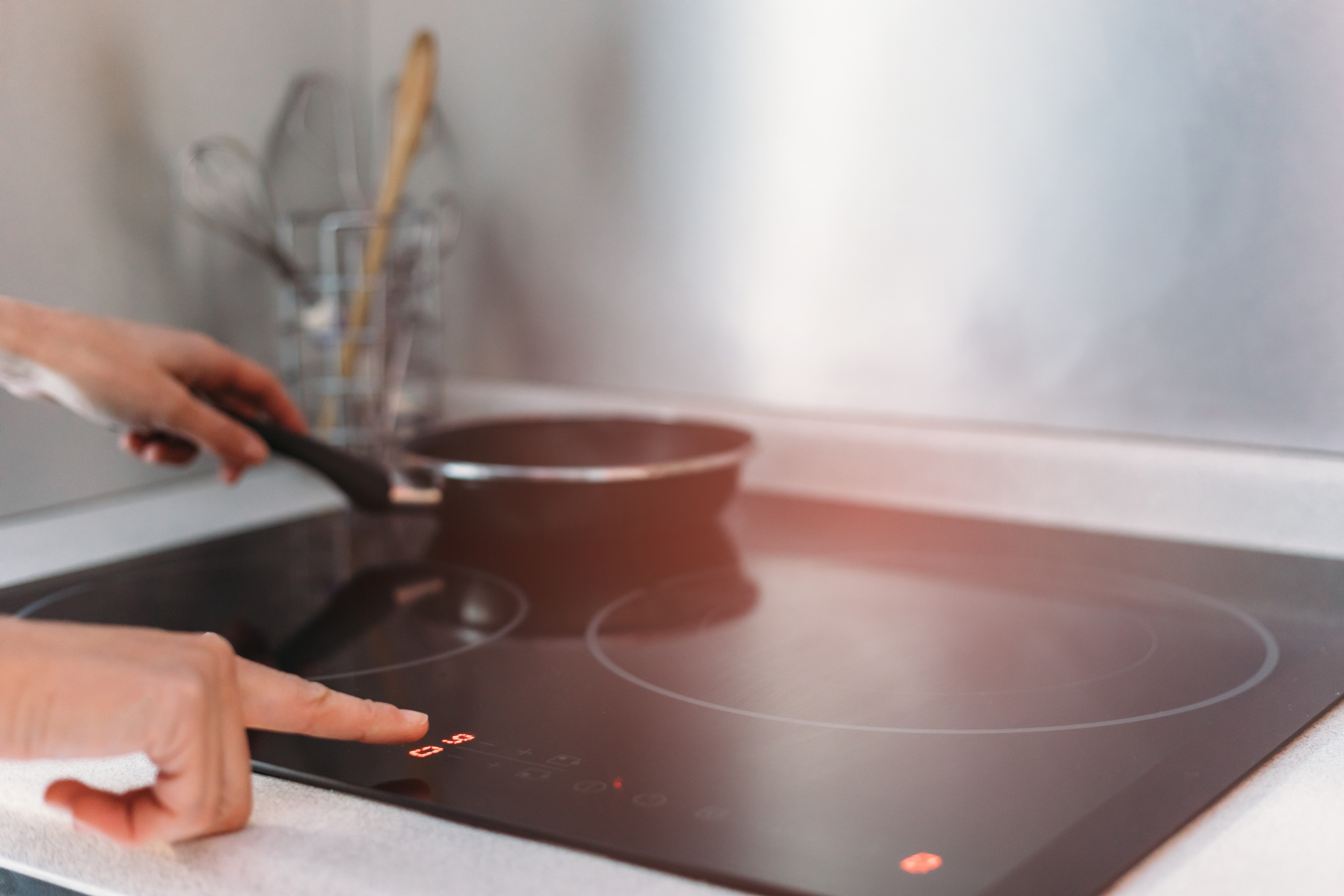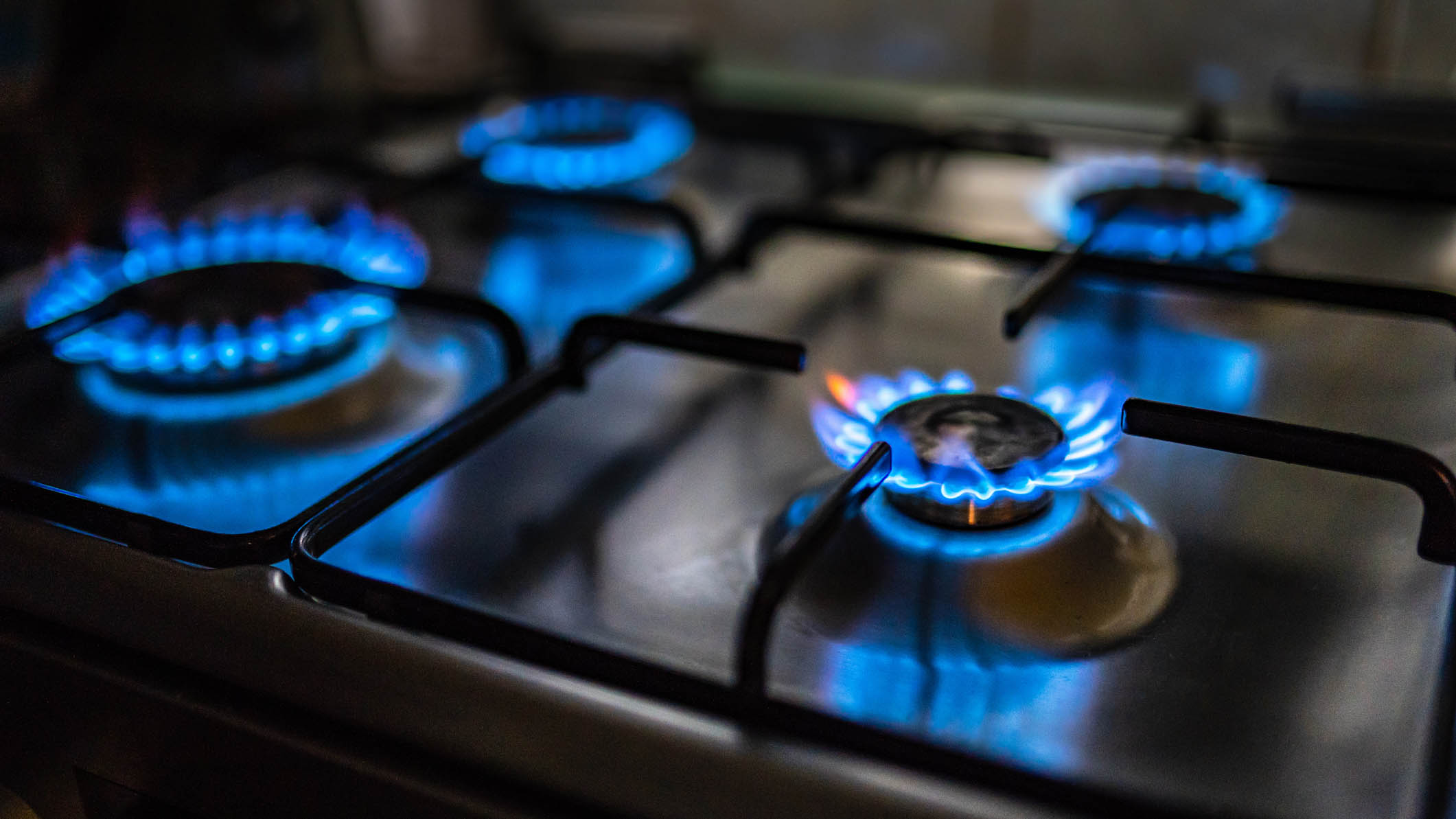Induction hob vs gas hob—which should you have in your kitchen?
Choosing between an induction hob vs gas hob can be hard. We weigh up the pros and cons between the two, evaluating cost, cooking performance, and energy-efficiency...

Choosing between an induction hob vs gas hob can be a tricky decision, given the pros and cons of both types. In our guide, we'll share the key differences between the two and lay out the benefits and downsides of each option so you can make the right choice for your kitchen.
For a long time, the choice of hob was simple—there were electric hobs, which were slow to heat up, slow to adjust and slow to cool down, and there were gas ones. Compared to electric, they tend to be faster, more controllable and a lot cheaper to run, too. But the options have got larger with the introduction of induction hobs, which uses clever technology to combine some of the benefits of both gas and electric.
So which one is superior in the induction hob vs gas hob debate? There are some big differences between the two types, such as installation and running costs, and they both cook in different ways (one specifically requires the best induction pans around). If you're torn, we've laid out the need-to-know details to help you decide which option is best for you.
Which is more affordable—induction hob vs gas hob?
If you’re thinking in purely financial terms, there’s no contest here. Gas hobs are much cheaper to buy and run—you can get a good-quality gas hob for less than $200/£200 compared with $400/£400-plus for induction.
Plus, the ultra-low price of gas means it’ll cost roughly half as much or less for annual running costs than the induction hob will.
There are other costs to consider, though, such as installment. If you’re completely switching to an induction cooker (from electric), you may need to rewire the kitchen (unless you opt for one of the best portable induction hobs instead), as induction hobs often require more power than standard electric hobs. And, if you’re switching to gas (e.g you've never had it before), you may need to have a new gas supply installed.
But, assuming you’ve already got the necessary electrical or gas supply in your home, there’s no question that gas is cheaper to buy and to use.
Sign up for the woman&home newsletter
Sign up to our free daily email for the latest royal and entertainment news, interesting opinion, expert advice on styling and beauty trends, and no-nonsense guides to the health and wellness questions you want answered.

Do you need new pans for a new gas or induction hob?
A gas hob will work with all of your existing pots and pans—whether you prefer to use the best non-stick pans or the best stainless steel pans—so you don’t need to worry about replacing anything.
But that’s not necessarily the case with an induction hob. For that, you'll need magnetic cookware that is specifically induction-compatible, and that generally rules out copper, glass and aluminum pots and pans. That is, unless they have an induction-friendly plate on the bottom—if they don’t have one, they won’t heat up.
For some people, it's necessary to buy new pots and pans if none of their exisiting ones are compatible with induction hob. However, much of the best cookware (especially if it's on the newer side) should work with induction hobs, so it's absolutely worth checking before you go out and buy a whole new set. If you’re unsure what a pot or pan is made of, grab a fridge magnet and put it at the bottom of the pan. If the magnet sticks, the pan should be fine on an induction hob.
In conclusion, you won't have to buy new types of pans for a gas hob, but you might have to if you are installing a new induction hob.
What are the key benefits of induction hobs and gas hobs?
Both hob types have their pros and cons, and the one that works best for you will depend on your priorities when cooking.
Some of the pros of gas hobs include:
- They're more affordable to set up and run, as evidenced above.
- They're more controllable than traditional electric hobs, as you can the turn the temperature up and down at your will.
- They're good for specific cooking tasks such as stir frying and searing steak (professional chefs use gas for a reason).

And the pros of induction hobs include:
- They're good at overall cooking whatever the temperature—gas hobs can sometimes be trickier to control when you want the temperature low enough to gently simmer a sauce, for example.
- Induction hobs are safer and more convenient, too. An induction hob won't heat up without a pan on it, and it will immediately cool down when a pan is taken off.
- They are generally much easier to clean. Because of the way it is made, you are much less likely to get burnt-on food on an induction hob, and they are typically flat surfaces—whereas gas hobs have lots of little nooks and crannies.
- They provide more control while cooking—induction hobs respond immediately to temperature change unlike gas
- They're energy efficient—in the induction hob vs electric hob debate, this is where induction largely wins out.
What are the downsides of induction and gas hobs?
Just like the pros, there are downsides to both induction and gas hobs too. Induction hobs cost more to buy and run (and, sometimes, to install), and their glass surfaces are more easily scratched and damaged than hardier gas hobs. As mentioned, you may also have to replace some of your favorite cookware—for example, some your best woks, which don't work well on induction hobs—and a lot of the cheapest cookware around also isn’t compatible.
On a purely practical level, gas hobs can be a real pain to clean, especially in the areas immediately around the burners, and on a big-picture level, they have a heftier environmental footprint. You can sign up with a green energy provider to run an induction hob on renewable energy, but you can’t do the same with a gas one. Gas hobs can also be harder to control the temperature on, and they can be dangerous with little ones around given the live flame they produce.
Induction hob vs gas hob—the overall verdict
This is a tough one—having owned, and cooked hundreds of meals on, both kinds of hob, it's not easy to decide between the two types of hobs.
Financially, gas makes more sense. Practically and environmentally though, we think induction has the edge. Induction is also faster and safer—and while it's arguably a bit more awkward, it’s easy to get induction-friendly cookware nowadays, which wasn’t necessarily the case even a few years ago.
Assuming money isn’t a huge issue, you haven’t spent years collecting copper cookware and you don’t need to shell out for a kitchen rewire, overall, we’d recommend induction. We like the extra control it offers, especially for low-temperature cooking, and the wipe-clean surface is a major plus. Both kinds of hob are really great for any kind of cooking—but we believe induction is slightly better.
Writer and broadcaster Carrie Marshall has been writing about all kinds of technology since 1998. Carrie’s CV is a who’s who of magazines, newspapers, websites and radio programs ranging from T3, Woman & Home, Techradar and MacFormat to the BBC, Sunday Post and People’s Friend, and she offers straight-talking tech advice on BBC Radio Scotland every Monday. Carrie has also written thirteen non-fiction books and ghost-written two more, and she has also been the co-writer of seven books and a Radio 2 documentary series. Her memoir, Carrie Kills A Man, will be published in late 2022.
-
 Unforgettable date ideas to make a great first impression or rekindle romance
Unforgettable date ideas to make a great first impression or rekindle romanceForget the same old first date formula - these unforgettable date ideas will leave them thinking about you long after you go home
By Natalie Denton Published
-
 Butter yellow might be the colour of the season, but Amal Clooney is making me want to try sunshine shades
Butter yellow might be the colour of the season, but Amal Clooney is making me want to try sunshine shadesSpark some joy by adding some statement yellow pieces to your wardrobe just in time for summer
By Matilda Stanley Published